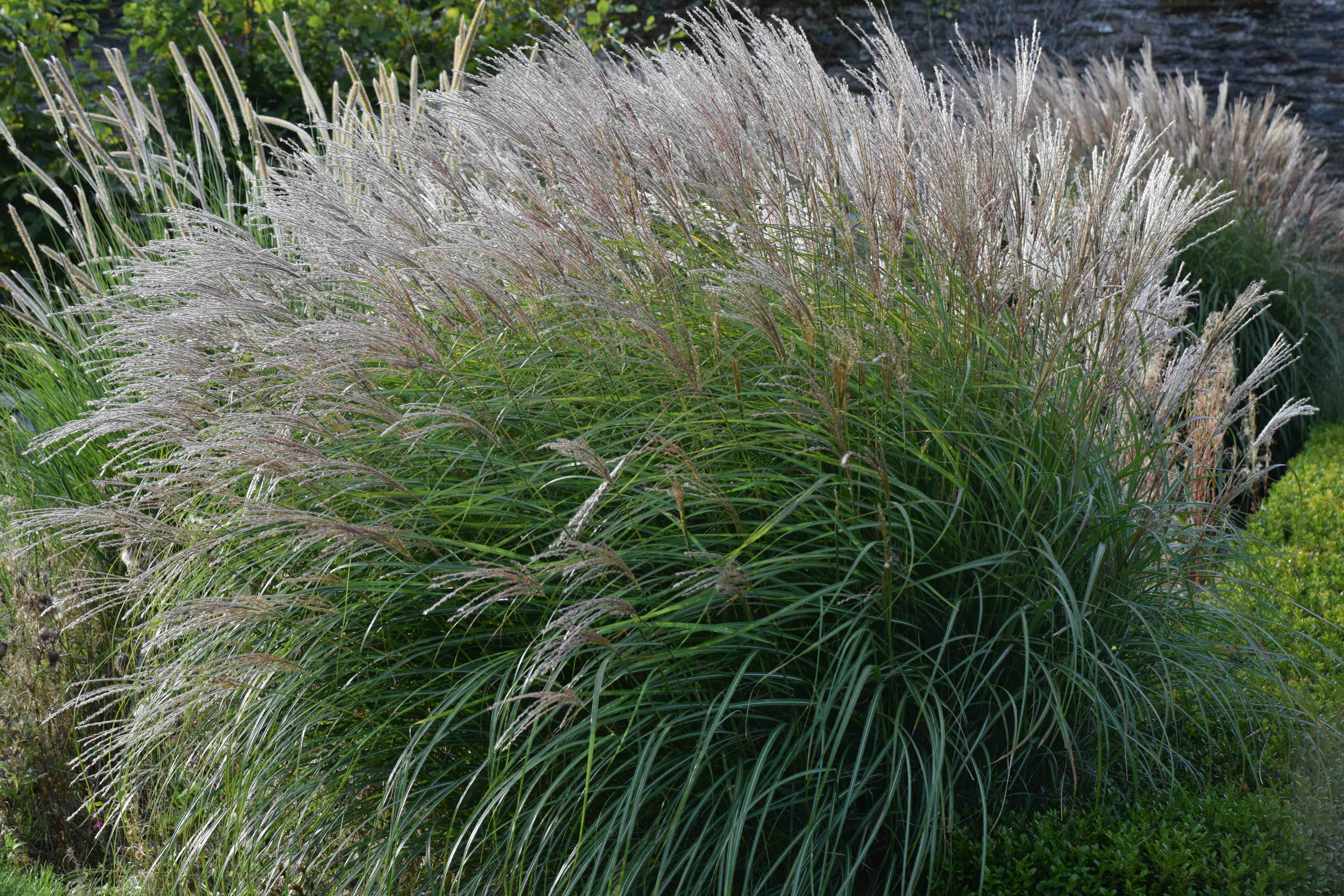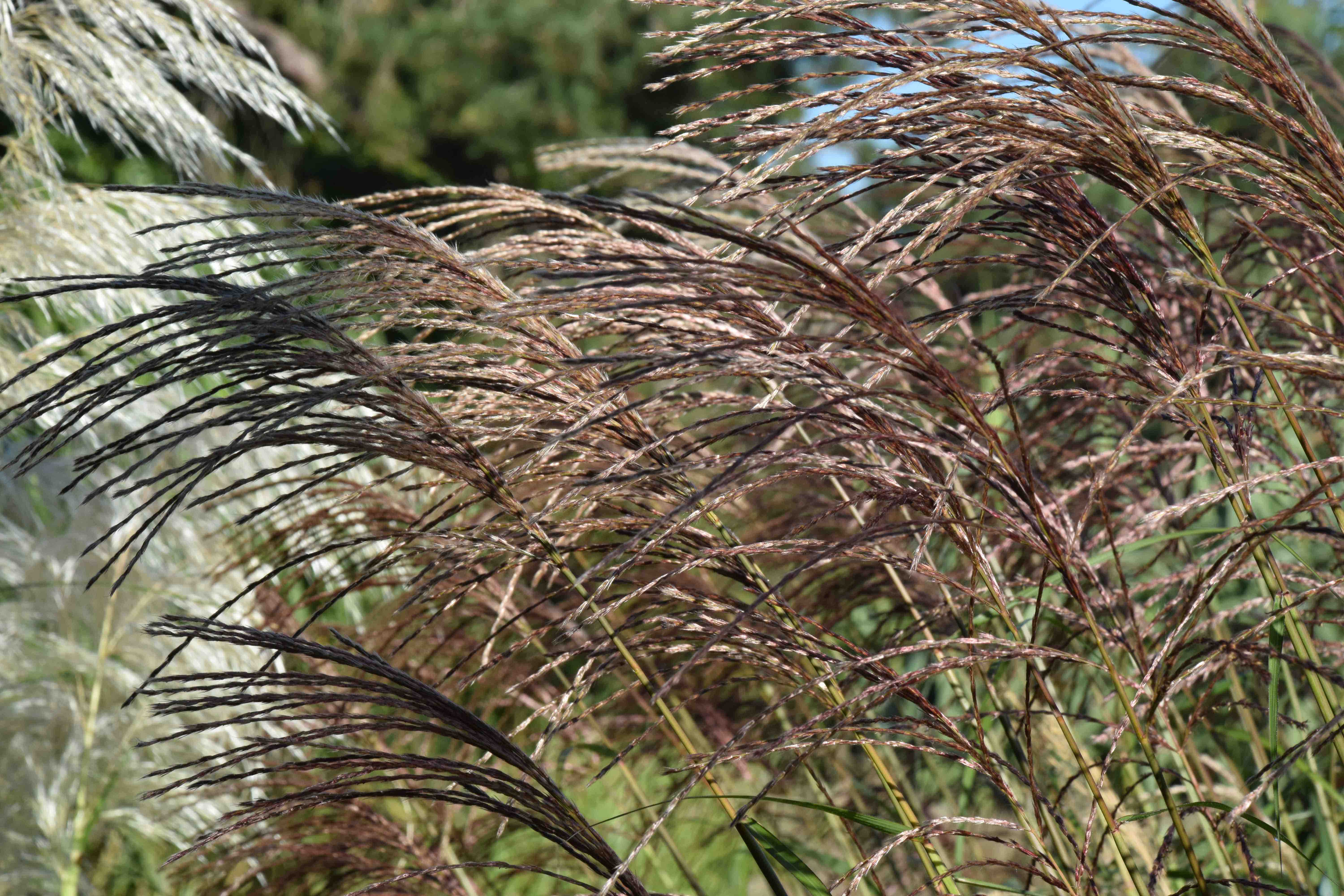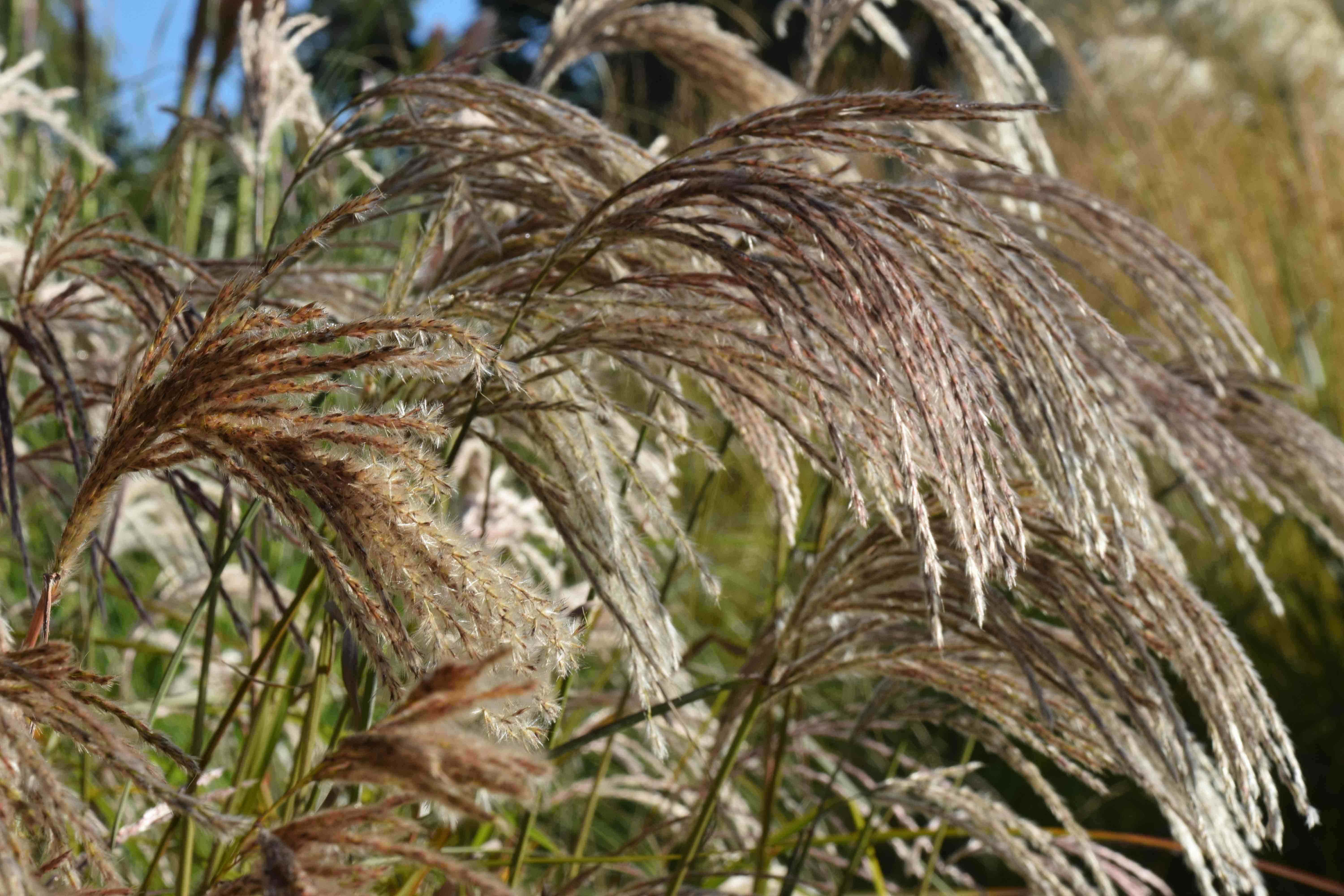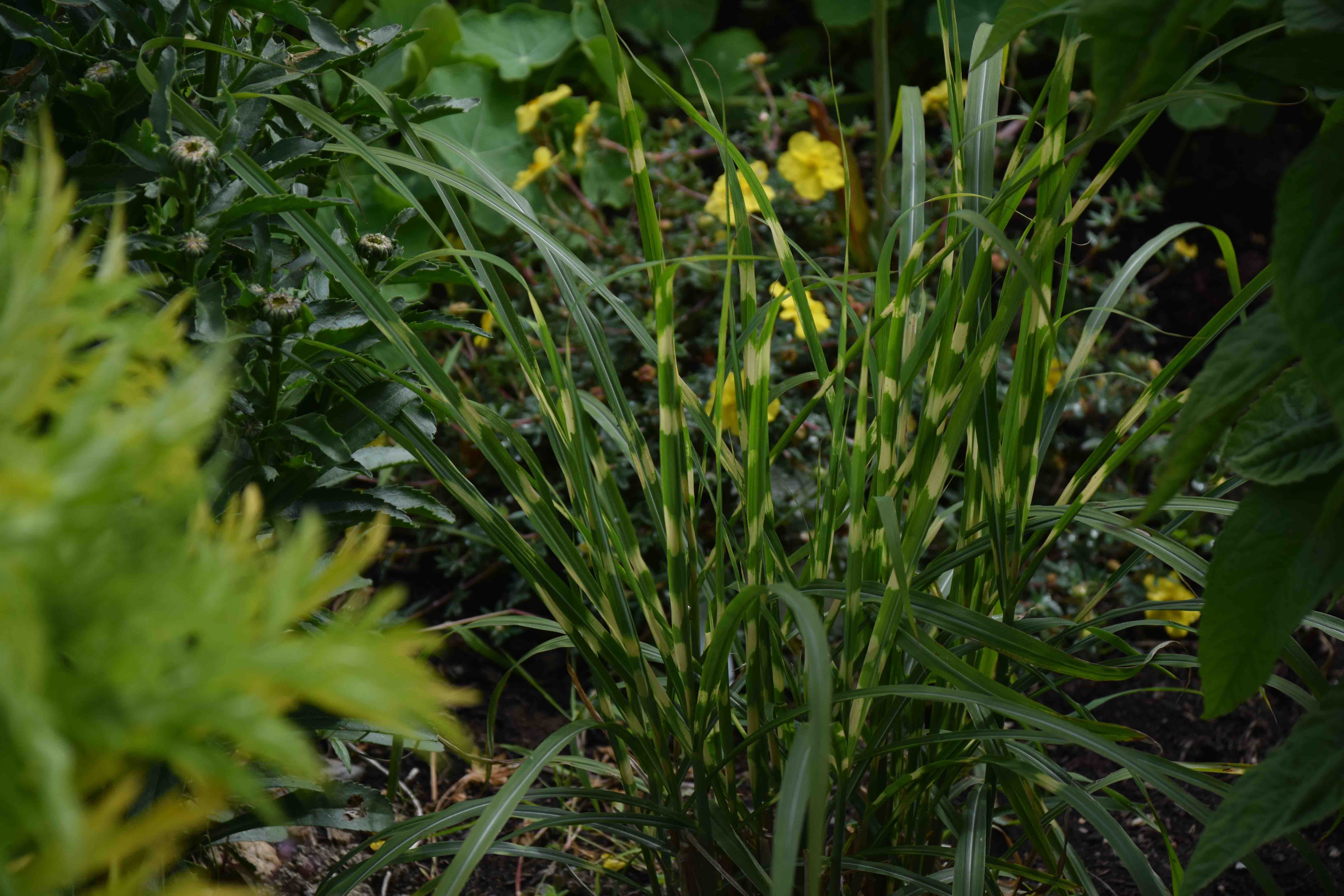
When I started gardening, ornamental grasses were rarely considered as ingredients in our borders. The exceptions that spring to mind are blue Festuca glauca, which makes neat hummocks of spiky foliage and variegated Phalaris arundinacea, sometimes called gardeners’ garters. The fescue was always admired but the phalaris was always treated with suspicion. It is gorgeous with its bright, white-striped leaves but it is as invasive as bindweed and just as difficult to remove from where it is no longer wanted. This invasiveness, plus the spreading habit of many common bamboos put gardeners off the idea of growing grasses for a long time.
But then the popularity of more naturalistic planting caused more interest in grasses. And as people wanted gardens that looked good without flowers grasses surged in popularity. The range of grasses is now huge and can be confusing, but one group that is well-behaved and easy to recognise and incorporate in the garden are the miscanthus.

Most are forms of the widespread Miscanthus sinensis and are bold, tall grasses. They do not run but make thick clumps with annual stems producing fountains of foliage and, in late summer or autumn, fluffy plumes of flowers, usually in pink and red shades, ageing to silver. There is a useful range of heights and while some have plain green leaves, others are variegated. The tallest are great for summer screening and the shortest can be feature plants in small gardens and are much better than the ubiquitous pampas grass, notably because the leaves are not likely to tear your skin to ribbons!
For this purpose, none is better than ‘Kleine Silberspinne’ (little silver spider) which makes neat clump about 1.2m (4ft) high in flower. You can see four-year old clumps above.

‘Kaskade’ is a taller variety with more spectacular, pink flowers and the foliage also turns red in autumn. ‘Malepartus’ is even brighter and significantly taller, at 2m (6ft 6in) but also flowers earlier than most so those red plumes will blend with your dahlias and cannas in September.

Most variegated miscanthus have stripes along the length of the leaf but a few have stripes across the leaves. ‘Zebrinus’ is the best known, with interesting yellow bars across the leaves but ‘Little Zebra’ is similar but shorter at 1m high.
Key points
Miscanthus will grow in any soil but struggle in very dry soils or wet clay. They are best in fertile soil and in full sun. They may not flower well in shade and may lean towards the light. Otherwise they rarely need staking.
In very windy spots choose the lower-growing kinds.
All the leaves and stems will die in winter but will remain attractive while brown. In spring the new shoots are produced from ground level. It is essential that they are cut back to 15cm in March, before new growth starts or it can be a fiddly job to cut back the old stems without removing the new growth!
Like all grasses, they should be moved or divided in spring, ideally just after trimming. But you can plant them at any time if they are growing in pots and autumn is always a good time to plant.
Although they are not evergreen, miscanthus are a good alternative to bamboos for screening. Although they will have to grow from ground level to their full height through the season they will be effective in summer, when most of us are using their garden.
The flowers are great for cutting.
Jobs for the week
Don’t forget the birds. There may be plenty of berries in the hedges but supplementary feeding will keep your garden birds well fed. Buy a range of feeders and feeds for a wide variety of species – not every bird loves peanuts.
Keep the lawn free from leaves and rake out moss.
Protect tender plants in pots by moving them to beside the house. Remove any saucers from under pots to prevent waterlogging.